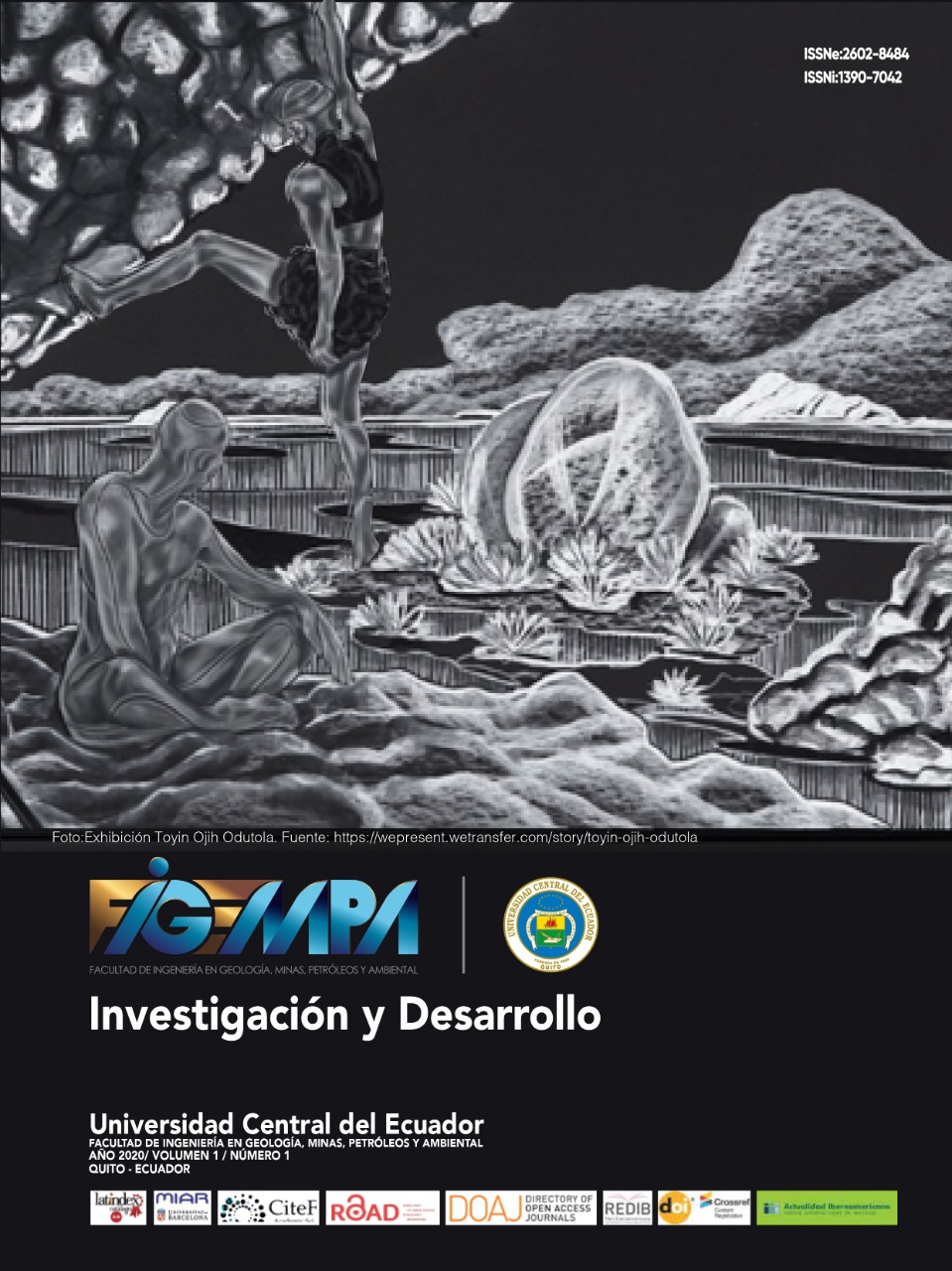Cordillera Real: metamorphism variation along The Atillo-Normandía route
Main Article Content
Abstract
The Atillo - Normandy study area belongs to the Guamote - Macas highway, located in the Cordillera Real, it has a high susceptibility to mass removal phenomena due to the instability of the terrain and intense rainfall in this area. The basement of the Cordillera Real corresponds to metamorphic and plutonic rocks, which have been affected by tectono-metamorphic events during the Mesozoic, causing local variations in the metamorphic grade of lithological sequences of the region. Several authors have established the highest metamorphic grade is in the center of the Cordillera and decreases towards the flanks. When determining lythology of the Atillo - Normandy route, defining: paragenesis and the tipomorphic mineral, three metamorphic facies was established: prehnita-pumpellyite, green schist and amphibol epidote. The last one it’s reflected in a greenstone with garnets, this rock has the highest metamorphic grade, therefore, marks the central axis of the variation of metamorphism. This rock has not been described in previous studies of Cordillera Real, through DRX analysis it was determined, that this rock has a basaltic protolith, furthermore, suffered a process of uralitization that is a characteristic process of retrometamorphism.
Downloads
Metrics
Article Details

This work is licensed under a Creative Commons Attribution 4.0 International License.
References
Aspden, J. y otros, 1992. Regional S-type granites in the Ecuadorian Andes: Possible remnants of the breakup of western Gondwana. Journal of South American Earth Sciences, 6(3), 123-132.
Aspden, J. & Litherland, M., 1992. The geology and Mesozoic collisional history of the Cordillera Real, Ecuador. Tectonophysics, 187-204.
Best, M. (2003). Igneous and Metamorphic Petrology. Second ed. Melbourne: Blackwell.
Bucher, K. & Grapes, R. (2011). Petrogenesis of metamorphic rocks.8th ed. London: Springer.
Castro, A. (2015). Petrografía de Rocas Ígneas y Metamórficas. Primera ed. Madrid: Paraninfo.
INIGEMM. (2017). Mapa geológico de la República del Ecuador 2017. Instituto nacional de investigación Geológico Minero Metalúrgico. [En línea] Available at: www.geoinvestigacion.gob.ec/mapas-geologicos-2017/ [Último acceso: 20 03 2019].
Litherland, M., Aspden, J. & Jemielita, R. (1994). The metamorphic belts of Ecuador. First ed. Keyworth: NERC.
Pratt, W., Duque, P. & Ponce, M. (2005). An autochthonous geological model for the eastern Andes. Tectonophysics, 399, 251-278.
Reyes, P. (2009). Discusión sobre la evolución Jurásico-Cretácico de la Cordillera Real y el Bloque Amotape. Revista Politécnica, 30(1), 6-22.
Suárez, R. & Gonzáles, P. (2018). Caracterización geológica del metamorfismo diastatermal Mesozóico en la Cuenca Neuquina y su relación con la anomalía térmica en el sinrift. Revista de la Asociación Geológica Argentina, 75(3), 457-472.
Valín, M., Perez-Estaun, A., Martin-Izard, A. & Marcos, A. (1994). Variación de la textura y química mineral de rocas metabásicas en una zona de cizalla (Complejo de Cabo Ortegal, NW de España). Revista de la Sociedad Geológica de España, 7(1-2), 179-189.
Winter, O. D. (2001). An Introduction to Igneous and Metamorphic Petrology. Upper Saddle River: Prentice-Hall Inc.

